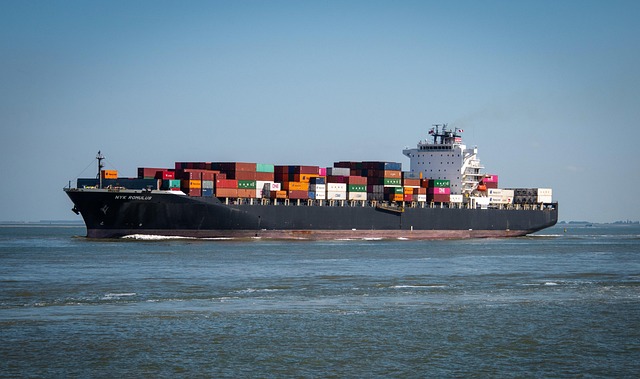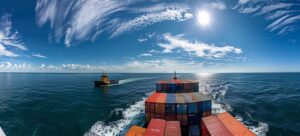Heavy-duty shipping containers have revolutionized global trade by enduring harsh ocean conditions, offering standardized dimensions for efficient transport (ISO containers), and catering to diverse cargo needs with specialized models. These robust containers, made from corrosion-resistant steel, adhere to ISO standards and are versatile enough for various modes of shipping. Container leasing services provide flexibility and cost savings, while advanced designs like refrigerated, high cube, and open top containers enhance global supply chain management.
Heavy-duty shipping containers have revolutionized maritime transportation, especially for rough ocean voyages. This article delves into the unique demands of such challenging journeys and explores the evolution of these robust containers. We examine key design features and consider their critical role in enhancing safety and efficiency. Discover how these specialized containers benefit various sectors within the maritime industry, making them indispensable game-changers in global trade.
- Understanding the Demands of Rough Ocean Voyages
- The Evolution of Heavy-Duty Shipping Containers
- Key Features and Design Considerations
- Benefits and Applications in the Maritime Industry
Understanding the Demands of Rough Ocean Voyages

Navigating the unforgiving waters of rough ocean voyages places immense demands on shipping containers. These vessels, often referred to as freight containers, intermodal containers, or sea containers, must withstand extreme conditions including high waves, strong currents, and unpredictable weather patterns. The journey can be a long and arduous one, spanning thousands of miles, and the containers themselves are subjected to constant jostling and exposure to harsh elements.
This rigor requires robust construction materials and innovative design features. ISO containers, for instance, are known for their standardized dimensions and capacity, ensuring efficient storage and seamless container shipping. Some specialized containers, such as refrigerated containers, high cube containers, or flat rack containers, offer enhanced functionality tailored to specific cargo types. Container leasing and rental services have also become integral parts of the logistics landscape, providing flexibility and cost-effectiveness for businesses engaged in international trade, utilizing container depots as strategic hubs for efficient container transport.
The Evolution of Heavy-Duty Shipping Containers

The evolution of heavy-duty shipping containers has revolutionized global trade and transportation. Historically, cargo was transported in bulk or less standardized containers, often leading to inefficiencies and delays. The modern shipping container, introduced in the late 20th century, changed the game by offering a standardized, robust, and versatile solution. Designed specifically for rough ocean voyages, these heavy-duty freight containers ensure secure and efficient transport of various cargo types, from raw materials to finished goods.
Over time, the design and capabilities of shipping containers have advanced significantly. The ISO container, with its universal dimensions and compatibility across different modes of transport (intermodal container), has become the industry standard. These containers come in diverse configurations like high cube, refrigerated, open top, flat rack, and more, catering to specific cargo needs. Container leasing and rental services have also grown, providing flexible options for businesses that require temporary storage or transport solutions, such as office containers or specialized shipping crates.
Key Features and Design Considerations

Heavy-duty shipping containers designed for rough ocean voyages are a marvel of modern engineering, built to withstand extreme conditions and ensure the safe transport of goods globally. Key features include robust construction with reinforced corners, rigid frames, and sealed locks to protect cargo from damage and theft during transit. These containers are typically made from high-grade steel, treated to resist corrosion from salty sea air and other environmental factors, ensuring longevity even in harsh marine environments.
Design considerations for these freight containers prioritize strength, durability, and versatility. They adhere to international standards, most commonly the ISO (International Organization for Standardization) specifications, guaranteeing uniform dimensions and compatibility across different shipping modes – be it container ships, trains, or trucks. This interoperability facilitates seamless intermodal transport, making them ideal for global supply chains. Furthermore, specialized containers like refrigerated, flat rack, open top, high cube, and modular designs cater to diverse cargo needs, from perishable goods requiring temperature control to oversized or unconventional items needing custom accommodation.
Benefits and Applications in the Maritime Industry

Heavy-duty shipping containers designed for rough ocean voyages have brought about a revolution in the maritime industry. These robust containers, often referred to as freight containers, intermodal containers, or ISO containers, offer numerous benefits that streamline global trade. Their durable construction ensures they can withstand extreme conditions during transit, reducing damage and loss of cargo. This enhances efficiency and cuts down on costs associated with insurance and replacement.
The versatility of these containers is another significant advantage. They serve various applications, from transporting raw materials and manufactured goods to serving as temporary storage solutions at ports and warehouses (container depot). Container shipping has also enabled innovative uses like transforming a standard sea container into a mobile office (office container), refrigerated storage for perishable items (refrigerated container), or even residential spaces (modular container). This adaptability makes them an indispensable tool in the ever-evolving landscape of international trade, where container leasing and rental services play a pivotal role in meeting fluctuating demand.
Heavy-duty shipping containers have evolved to withstand the rigors of rough ocean voyages, becoming a cornerstone of the maritime industry. By understanding the demands of these journeys and incorporating innovative design features, these containers ensure efficient transportation while safeguarding cargo integrity. The benefits are clear: enhanced resilience, reduced damage, and cost savings. As the shipping container continues to adapt to changing needs, its pivotal role in global trade remains indispensable, revolutionizing how we navigate the world’s waterways.
